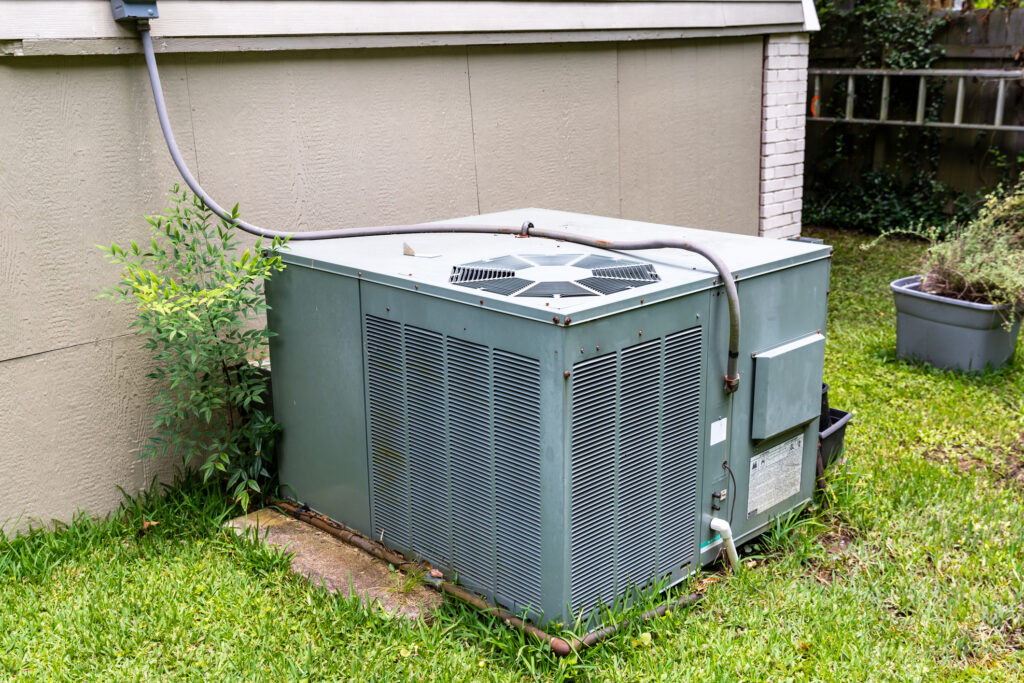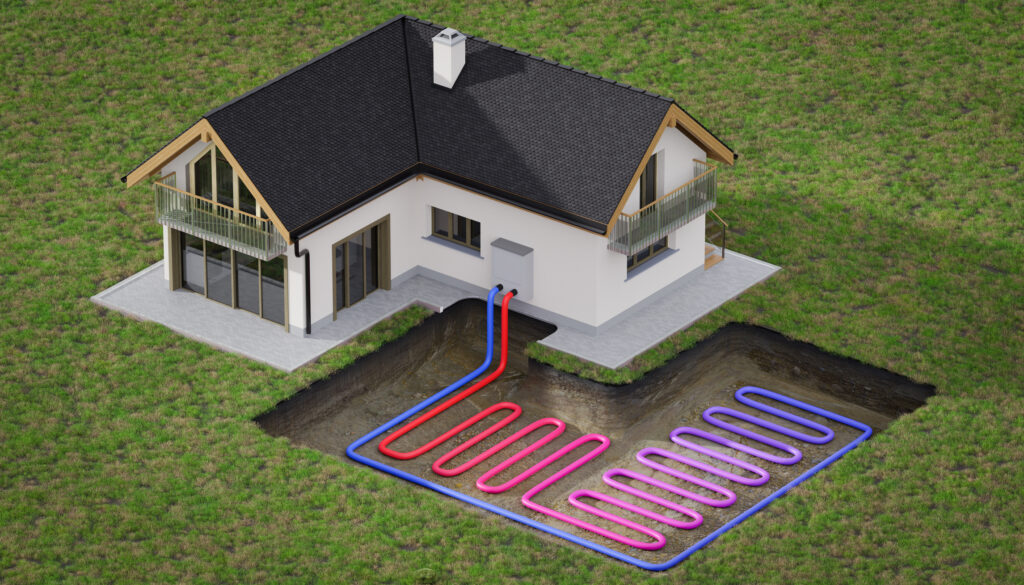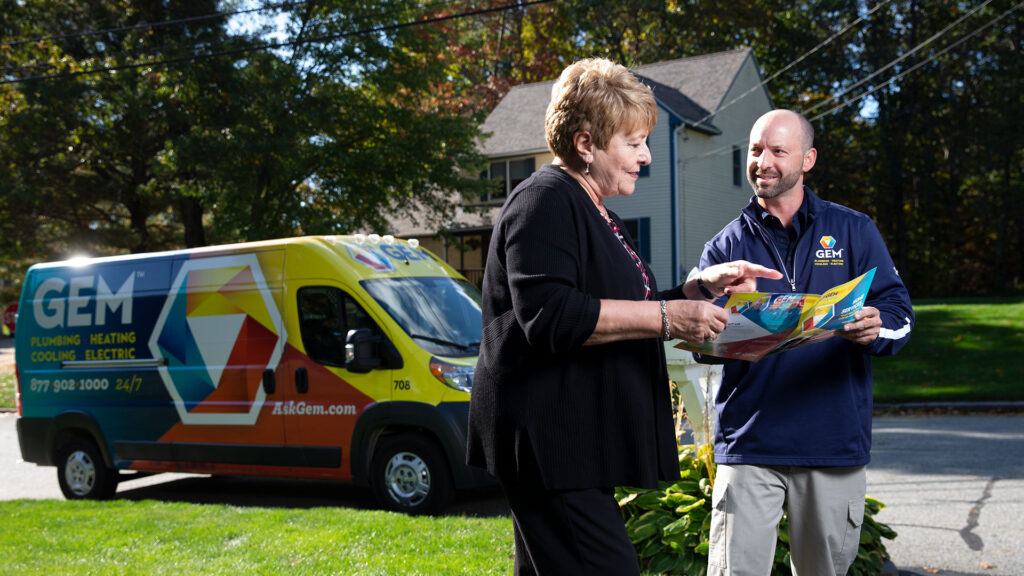
What Did The Light Bulb Say To His Upset Friend?
“Watts the matter? Lighten up!!”
Alright, alright, jokes aside…we’re here to help you with all things light switches. If you are having trouble with your electricity, need to wire new outlets, install a new light switch, or want to install a dimmer on existing switch, we’ve got your back.
Check out our articles below for troubleshooting guidance, how-to’s, tips, and tricks on all your home lighting needs.
- Wiring a 2-Way Light Switch
- How To Wire a Dimmer Switch for Your Lights
- How to Replace a Single-Pole Light Switch
- How to Replace a Three-Way Switch
Electrical How-To’s: Wiring A 2-Way Light Switch
Believe it or not, wiring a 2-way light switch is one of the simplest tasks for a homeowner to do themselves. So, it’ll be a piece of cake for a DIY-er like you! Here’s how to get your light switch all set up. Then, maybe afterwards you can actually enjoy a piece of cake!
First of all, let’s make sure that we’re all on the same page. A 2-way light switch is one where the electrical unit (such as a lightbulb) has two different locations from which it can be controlled. For example, maybe you can turn off your basement lights from either (1) the top of the stairs, or (2) the bottom of the stairs.
Electrical DIYS: How To Wire A Dimmer Switch For Your Lights
Whether you are a thriller, horror, comedy, or rom-com movie-aficionado, your evening film is much better enjoyed with the lights in your living room dimmed. It’s all about setting that movie-time ambiance, right!? We’re here to help you get there.
Installing a dimmer switch is a relatively easy task, so it’ll be a breeze for an expert Do-It-Yourselfer like yourself! Let’s get started.
Before you get started, think about what kind of light switch the light that you are installing a dimmer for has. There are two possibilities:
- A single-pole dimmer (through which you can control a light with only one switch in one location)
- A 3-way dimmer (through which you can control a light from two different switches in two locations)
Once you know what kind of light switch it has, go purchase the corresponding number and type of dimmer switches.
Now you can install your dimmers! First, turn off the power! We don’t want you to get hurt.
- Remove the current light switch using a screwdriver.
- If there are wires behind the switch, disconnect them.
- Beware! Make sure that the wires are not electrically charged before you go poking your fingers around in them! To do so, test the wires using a non-contact voltage detector.
- Reattach the wires to your new dimmer switch.
- Connect each original wire to the new dimmer wire by twisting the ends together using a pair of pliers. Then use a wire connecting nut to cap them off.
Note: The ground wire from your dimmer (which are typically copper) must be attached to a green wire
Note: Make sure that you keep track of the common wire from the wall switch, and attach it to the dimmer wire.
- Install the dimmer on the wall using a screwdriver.
- Install the new wall plate using a screwdriver.
Beware! Make sure to neatly tuck all of the loose wires back away behind the switch.
Note: You also want to ensure that the box that you chose is large enough to fit and hide all of the wires away.
- Put the removable dimmer knob back on the dimmer (if it has one).
And now you’re all set to set that movie-time ambiance! So, sit back, relax, and enjoy!
If for some reason following these steps did not get you to where you needed to be, give your local service provider a call for some extra assistance.
Electrical Help — How To Replace A Single-Pole Light Switch
Replacing a single-pole light switch (a switch that controls one light fixture or electrical outlet) is one of the simpler tasks that homeowners can do for themselves. So, it’s easy peasy lemon squeezy for a pro Do-It-Yourselfer like you! Follow the steps below to get that light switch replaced.
Note: It is important to keep in mind that electricity must be respected. Always:
- turn off power to a switch or outlet at the electrical panel
- double check the switch or outlet with an electrical tester to make sure the power is off
- don’t hesitate to call a qualified electrical contractor whenever you feel that you’re in over your head.
Also, be sure to have the right tools for the job. Don’t bother with bargain basement tools. Buy the following tools from your local home center or hardware store:
- A good quality wire stripper
- Good quality needle nose pliers
- Good quality screwdrivers
- A Good quality non-contact electrical tester
Notice anything about all of those tools? They are all good quality. This is extremely important because good quality tools lead to good quality handiwork. It’ll be like you have your very own professional toolkit!
Pro Tip: Look for tools, such as screwdrivers, that are made for electrical work — they’re non-conductive to reduce the danger of getting shocked. (We don’t want you to get hurt!) For more complicated projects, you may want to invest in a voltmeter. You won’t need one, though, to replace a single-pole switch
Before we get started on that single-pole light switch, here’s some basic information on electricity.
A switch will have two wires going to it, a black “hot” wire and a white neutral wire. Switches and outlets are wired in series with the electricity flowing to the devices through the black hot wire and returning to the electrical panel through the white neutral wire. That completes the circuit.
Hint: If you open up a box and find two sets of cables in the box, it means you’re in the middle of the circuit. If you open up a box and there are only two wires, that’s the end of the circuit.
Wires are supposed to be color coded (Yay, we love color coding!), but you may find in an older home that a white wire is the hot wire. In that case, you’ll have to use your electrical tester to determine which wire is the hot wire. That won’t be an issue, however, with a single-pole switch.
So, let’s get that single-pole light switch replaced!
- Turn the power off at your electrical panel. If you’re lucky, all of the breakers on your electrical panel are clearly labeled.
Hint: If you can’t locate the breaker that controls the switch in question, it’s safest to turn all of the breakers off.
- Remove the cover plate from the switch.
- To double check that the power is off to the switch, hold your non-contact electrical tester up to the terminals on the side of the switch. The tester should be silent.
If it beeps or chirps, there’s still power going to the switch.
- Inspect the switch for obvious problems, such as one of the wires being disconnected.
Next, you’ll need to partially remove the electrical outlet or light fixture that the switch controls so that you can see if there’s power going to it.
- Go back to the electrical panel and turn the breaker back on.
- Using your electrical tester, see if there’s power going to the switch.
- Test to see if there’s power at the light fixture or outlet.
Hint: If there’s power running to the switch but the light or outlet is dead, then the switch is the problem and it needs to be replaced. Turn the power off again(at the breaker).
- Unscrew the switch from the electrical box and gently pull it out of the box.
You’ll see three terminals to which are attached a black, or hot, wire, a white neutral wire, and a bare copper or green ground wire that attaches to a green grounding screw on the switch. Unscrew the wires from the switch.
Hint: The good news with a single-pole switch is that it doesn’t matter which wire you attached to which terminal. It’s always good practice to attach the grounding wire to the green terminal first.
- Switches are labeled for “On” and “Off” or up and down, so pay attention to how you put the switch back into the box.
- After you’ve attached the wires, screw the switch back into the box but don’t tighten the screws all the way yet.
- Place the cover plate over the switch and make sure it covers the switch properly and that it fits straight.
If not, adjust the position of the switch inside the box and finish tightening the screws once everything is straight and fitting properly.
- Turn the power back on at the breaker and test the switch. Success!
Well done, DIY-er! You’ve got your light switch back and running, and brought light back into your life!
If for some reason these steps did not getting your electricity back to normal, give your local electrician a call. He/she will be happy to get you back on track!
Electricity Help — How To Replace A Three-Way Light Switch
A-B-C, it’s easy as 1-2-3 for a 3-Way Light Switch! If you’re having trouble with these complicated electrical switches, we’re here to help. Follow these steps to replace a 3-way light switch. We are happy to bring the light back into your life!
O.K., so what’s a 3-way light switch?
A three-way switch is used to control a light fixture or outlet that’s controlled by two switches. For example, say you have a light fixture in a hallway or entryway that’s controlled by switches at either end of the hallway or at the top and bottom of the stairs. Either switch is able to turn the light on and off.
Note: This kind of switch will turn the light or device on or off from either the up or down position. (It depends on the position of the second switch and which switch was last used to turn the light or device on or off.)
Replacing a three-way switch is more complicated than replacing a single-pole switch, but it’s still a task that can be accomplished by a distinguished Do-It-Yourselfer, like you!
Beware! It’s important to keep in mind that electricity must be respected.
- Always turn off power to a switch or outlet at the electrical panel.
- Double check the switch or outlet with an electrical tester to make sure the power is off.
- Don’t hesitate to call a qualified electrical contractor whenever you feel that you’re in over your head.
Also, be sure to have the right tools for the job. Don’t bother with bargain basement tools. Buy these tools from your local home center or hardware store:
- A good quality wire stripper
- Good quality needle nose pliers
- Good quality screwdrivers
- A good quality non-contact electrical tester
Notice anything about all those tools? They are all good-quality! Remember, good quality tools allows for good quality handiwork. It’ll be like you have your own professional toolkit!
Note: Look for tools, such as screwdrivers, that are made for electrical work — they’re non-conductive to reduce the danger of getting shocked. (We don’t want you getting hurt!) For more complicated projects, you may want to invest in a voltmeter or multimeter.
Before we dive in, here’s some basic information on electricity.
A single-pole switch will have two wires going to it, a black “hot” wire and a white neutral wire. A three-way switch will have a black hot wire and two white neutrals.
Switches and outlets are wired in series with the electricity flowing to the devices through the black hot wire and returning to the electrical panel through the white neutral wire. That completes the circuit.
Hint: If you open up a cable box and find two sets of cables in the box, it means you’re in the middle of the circuit. If you open up a box and there are only two wires, that’s the end of the circuit.
A three-way switch uses an additional colored wire along with an extra terminal. This allows you to control a light or other device from two different switches.
Now, let’s get that 3-Way Switch Replaced!
- Attach the black hot wire to the “common” terminal.
Hint: You can tell which terminal is the common because it’s typically a different color (such as black) from the other terminals. The other terminals are called the “traveler” terminals.
The white neutral wire and another colored wire (such as red) attach to the other two terminals. Just like with a single-pole switch, there’s also a copper grounding wire attached to a green terminal.
Note: If you live in an old house and it looks like the electrician who wired it used whatever color wire was in the truck that day, you’ll have to find out which wire is the hot wire.
- Turn the power off to the switch at the electrical panel.
- Unscrew the wires from the switch and, as an added safety precaution, cap all of them with wire nuts.
- Turn the power back on at the breaker and use your electrical tester to find the hot wire.
Pro Tip: You can mark it or label with a piece of tape so you know which wire it is.
Bonus Pro Tip! Another way to determine which wire is which is to remove both of the three-way switches. You’ll need an instrument called a multimeter for this.
Using your electrical tester, find out which wire is the hot wire on one of the switches. (That means the other two wires are the travelers.) Twist them together and cap them with a wire nut.
You’re looking for continuity, which indicates a complete circuit. Go to the other electrical box, set the multimeter to read continuity and, using the probes or alligator clips, attach them to the wires until you hear a tone from the meter. That indicates a complete circuit and it means that those two wires are the travelers.
By process of elimination, the remaining wire is the hot wire. Now that you know which wire is which, you can attach the new switch or switches to the wires.
Beware! Be sure that the power is turned off at the breaker. The black hot wire is attached to the “common” terminal, typically colored black. The other two terminals are brass. It doesn’t matter which traveler attaches to which terminal. As always, it’s good practice to attach the ground wire first.
Note: Unlike a single-pole switch, three-way switches don’t have an up or down or “On/Off” position, so the orientation of the switch in the box doesn’t matter.
- Screw the switches into the box
- Attach the cover plate
- Turn the power back on at the breaker.
- Test both switches.
If testing the switches goes as planned, then you’re back up and running! Well done, you pro DIY-er!
If for some reason following these steps didn’t work the way it was supposed to, don’t worry! Give your local electricity service provider a call and they will be happy to get you back on track.



